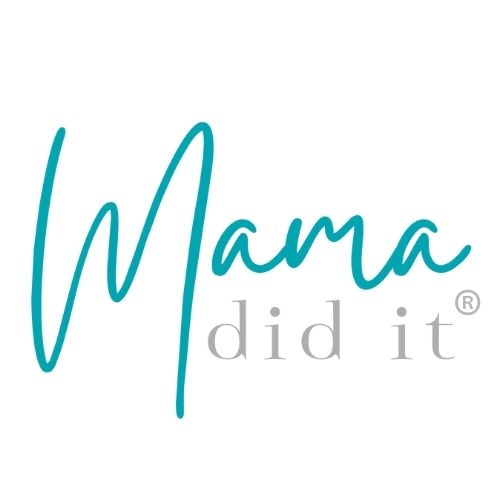There are many things we can do to help lower our risks of tears. Here are 7 ways how to prevent perineal tears from a postpartum nurse and Spinning Babies® Certified Parent Educator.
Perineal tears can be a great concern for pregnant mothers. But take heart because there are many things you can do to help prevent tears! My goal is to empower mothers in their pregnancy and childbirth, and this includes giving you tools you can use. Here are 7 ways how to prevent perineal tears (with many you can do today!)
Your perineum is the area between your vagina and bottom. A perineal tear is an injury to the tissues around the vagina or anus that happens during pushing and childbirth. These are measured in degrees: first, second, third, and fourth. A first degree tear is the most minor, and a fourth degree tear is the most severe. An episiotomy is a surgical cut to the tissues.
What we know about Perineal Tears:
- Around 90% of first-time moms experience some kind of vaginal tear during childbirth. Most of them are more mild with a small percentage being severe.
- Episiotomies have fallen out of favor. They were once done on most vaginal births, but the research tells us that natural tears usually heal better and faster. An episiotomy may still be used if your healthcare provider sees it may prevent you from having a severe tear.
And the good news? There are things you can do RIGHT NOW to help prevent perineal tears or episiotomies.
7 Ways How to Prevent Perineal Tears
1. Consume Healthy Fats
Healthy skin starts on the inside! What I mean by that is that it’s important to fill our bodies with foods that increase the integrity of our skin. Healthy fats are a big part of that. They are known to increase the health of skin, nails, and hair. Ditch the processed fats (like margarine, shortening, and palm oil) and grab natural ones. Things like coconut oil, extra virgin olive oil, avocados (also avocado oil), and butter are wonderful fats. Omega 3’s are another great one. Incorporating salmon once per week into the diet can be of benefit. Increase healthy fats during the last two weeks or more of your pregnancy to give your skin a boost.
2. Supplement Collagen Protein
Collagen supplementation has been studied for many years. Collagen is a type of protein found in our skin, tendons, connective tissue, and bones. It supports skin health from the inside of your body. Studies show that consuming hydrolyzed collagen can result in skin hydration and elasticity. Elasticity? Yes, please! We need that for our perineum during childbirth. Research suggests that taking collagen for 90 days provides the most benefit. Collagen can be mixed in hot drinks, oatmeal, or protein shakes. Here’s a good one.
3. Perineal Massage
Here’s the deal with the perineal massage. Research tells us that it works best at preventing episiotomies for first-time moms who massage once or twice a week. It doesn’t necessarily prevent tearing. But hey, if there is any benefit, then why not? A pregnant mama or her partner can perform this. To do a perineal massage:
- Start with clean hands. Short nails may be better too.
- Many women find lying down works best because it helps them relax more. Be sure to put a pillow under one hip so you aren’t flat on your back. Taking a shower or bath first may help relax and soften the perineum as well.
- Place coconut oil on your finger and around your perineum. (Vitamin E oil, olive oil, and grapeseed oil work well also.)
- Place your thumbs inside your vagina. Press them towards your perineum and against the sides of your vagina until you feel a slight stretching sensation.
- Firmly massage in a U-shaped motion. Move from the sides of your vagina downwards to your perineum, and back up again.
- Start with one minute. As you get used to it, increase the time.
Perineal massage shouldn’t hurt. You may find it awkward or uncomfortable at first, but it should never be painful. Ask your healthcare provider if you have any questions about perineal massage.
Are you having pelvic pain in pregnancy? Here are ways you can begin to relieve your pelvic pain today.
4. Side Lying Release
The Side Lying Release comes to us from Dr. Carol Phillips and has become popularized by Spinning Babies®. It is a stretch that slightly enlarges and softens the pelvis. The side lying release is typically safe to be done in pregnancy or during labor. Patients who are hypermobile should not do it.
Why does it work? A supple pelvic floor, one that isn’t too soft or too tight, is ideal for labor and delivery. Depending on our body’s balance, we may need some help in this area. The side lying release is a good tool to achieve this suppleness. To learn to balance your body with Spinning Babies® and do the side lying release, click here. Or sign up to take a class.

How to Prevent Tearing During Birth
5. Warm water compresses
Before beginning to push, try having warm compresses applied to the perineal area. This can make the skin around the area become softer and more supple before your baby’s head comes out. Recent research tells us that warm compresses may reduce third and fourth-degree tears. If your water is intact and you are able to soak in a warm tub before pushing, that’s even better!
6. Birth Positions that don’t compress the sacrum
This is a big one! The sacrum (your tailbone area) is considered the “back door” to your pelvis. Most of us don’t think of our sacrum as moveable, but it should be. It actually will move out of the way as baby’s head comes lower into your pelvis. When we lay on our backs to give birth (as many women do in our modern society) it can actually compress our sacrum where it can’t move out of the way as it should. Go ahead and practice positions that allow your sacrum to move. Need a visual? Here’s a quick video tutorial.
- Side Lying: This position can be used with or without an epidural and gives the sacrum the freedom to move as needed during pushing.
- Hands and Knees: pushing and delivering on our hands and knees also allows the sacrum to have mobility.
- Squat: Using a squat bar or a partner for support can also allow the sacrum to move freely as needed.
7. Follow your body’s natural pushing response
If you are having an unmedicated birth, you know when to push. It’s a natural instinct that comes and you feel you just can’t help it.
This can be difficult, but not impossible if an epidural is being used. Many times a mom may still be able to feel pressure with contractions when it’s time to push. Go with this pressure as you feel it.
- When you feel the urge to push, take a deep inhale and slowly exhale out. Don’t hold your breath. Try a controlled exhale instead of holding your breath.
- When you exhale, steadily blow out while focusing on blowing “out of your bottom” and not out of your face.
- It’s ok if your baby slips down the birth canal and then slips back up. It’s their way of making more room, and may even reduce tears.
7 Ways How to Prevent Perineal Tears
Remember, you can lessen your chance of perineal tears by adding healthy fats and collagen to your diet. This gives your skin elasticity from the inside and out!
Perineal massage and the side lying release are other ways you can create suppleness and space in the pelvis and perineum. Both of these may help prevent tearing and the need for an episiotomy.
Your birth positions and natural pushing urges are ways you can help prevent tears during birth. In your third trimester, begin to practice these so it comes instinctively when the time comes to deliver your baby.
All of these may help reduce your chance of tears or can lessen the degree of a tear if you do have one. Best wishes to you, Mama!
You may also like What to Pack for the Hospital or 8 Tips to Relieve Engorgement in Breastfeeding.
